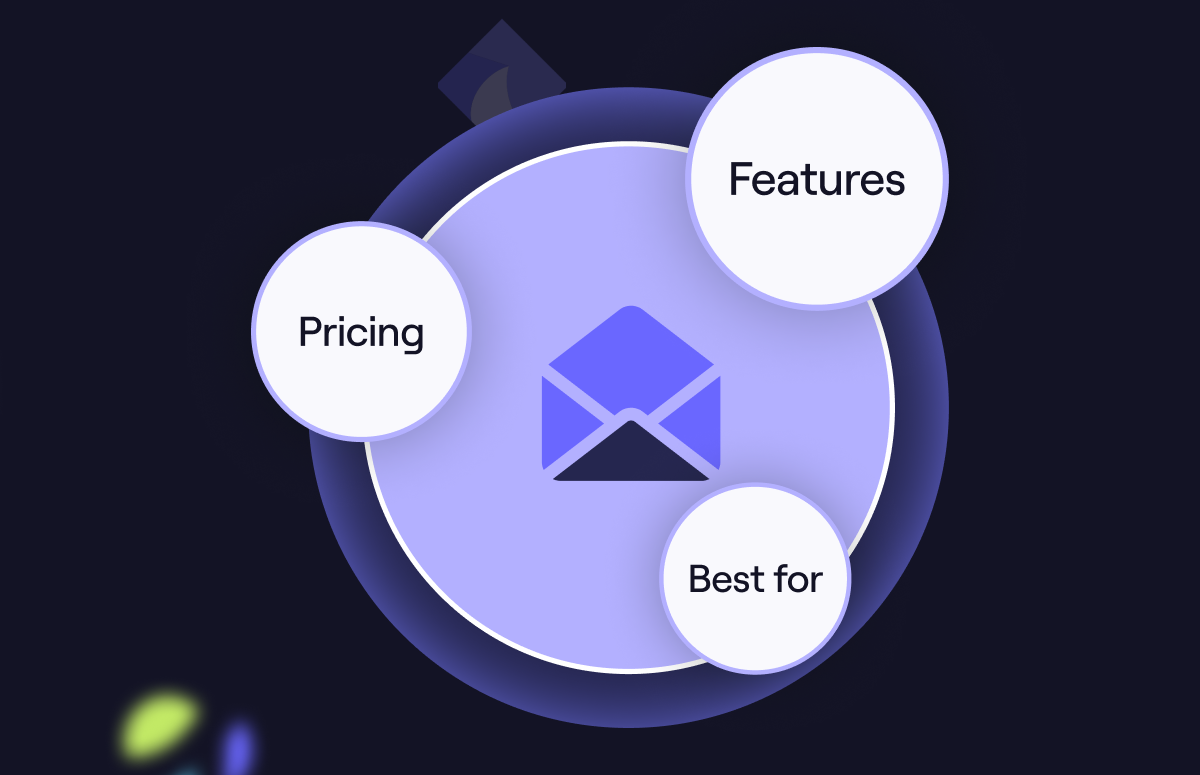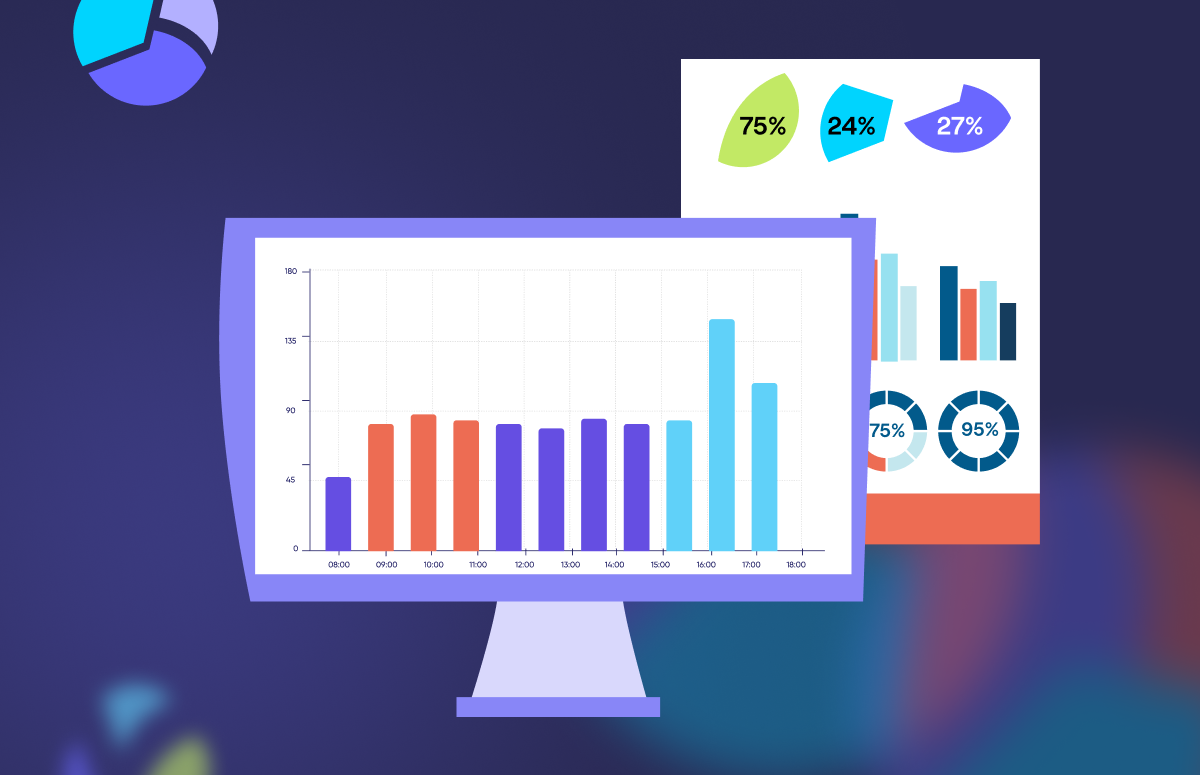Poor Data Quality: Effect on B2B Teams and How to Fix
A B2B sales team is only as good as the data it uses.
We often focus on quantity:
Quantity of new leads, quantity of activities, quantity of data.
But poor data quality isn’t going to win you any deals.
In this article, we address the cost of bad data head-on.
Read on to learn how bad sales data occurs and how you can fix it before your pipeline crumbles 👇
What is poor B2B data quality?
Inaccuracies, incompleteness, inconsistencies, or irrelevance characterise poor data quality. These may include typos, missing values, duplicate records, outdated information, and intentional actions.
Let’s look at each of these characterisations in detail:
Inaccurate
The data is incorrect or has human errors, like a mistyped email address.
Incomplete
The data is missing crucial pieces, like a customer profile with the prospect’s role but not their phone number.
Duplicated
There are multiple records for the same entity, like two Salesforce accounts for the same company.
Out of date
The data in question is no longer current, such as an account with the details of a stakeholder who has since left the company.
Inconsistent
There is a lack of uniformity or standardisation in how the data is recorded or formatted, such as inconsistent use of leads, contacts, and accounts in Salesforce across the business.
Why should you care about bad B2B data?
Does poor quality data really matter all that much?
Is it something you should be investing time and resources into remedying?
The short answer is yes.
To help you understand why, let’s explore the impact of poor data quality on sales and marketing teams:
It wastes time
Your reps rely most on your CRM sales data in B2B sales and throughout your organisation.
Some stats:
- Experian found that 94% of businesses suspect that the data they have on their customers is inaccurate.
- According to ZoomInfo, chasing bad data wastes over 27.3% of a B2B salesperson’s time.
Bad sales data leads to wasted time correcting errors, searching for accurate or up-to-date information, and making calls or sending emails that don’t reach the person you’re trying to contact.
It generates bad leads
Bad data is unusable for SDRs. They can’t call prospects if the phone numbers aren’t correct!
The wrong data in a contact field prevents reps from following up with leads. It also prevents searches from being populated with quality leads.
Businesses with poor data quality also waste their lead generation and marketing efforts because they have an inaccurate picture of target customers.
It leads to missed opportunities
If you make decisions based on inaccurate and outdated data, you’ll probably make the wrong calls. Bad data quality can lead to improper analysis of sales pipelines, resulting in inaccurate forecasts.
Poor data quality impacts your decisions and removes key engagement points from your sales funnel. This means that your salespeople won’t be able to communicate effectively with leads.
When that happens, your reps can’t nurture and convert new business. You’ll see reduced demand for your products/services and lost revenue.
👋Pssst - If you have bad B2B data, you probably have a broken sales funnel, too. Check out this article on how to fix your funnel.
It results in undelivered mail
It isn’t just the phone that’s important!
Your sales team relies heavily on email addresses to engage with leads, start the sales cycle, and close deals.
All their efforts go to waste if they don’t deliver their emails to the right inboxes.
When businesses have incorrect or outdated email addresses in their database, this can result in undelivered emails, ultimately affecting the success of email marketing campaigns.
Undelivered emails waste resources and time and damage a company’s reputation with internet service providers (ISPs). ISPs closely monitor the engagement rates of emails sent from a domain, and if they see a high rate of undelivered emails, they may flag the domain as spam.
This can lead to future emails from your domain being automatically sent to recipients’ spam folders, resulting in missed opportunities for communication with potential customers.
Say goodbye to high bounce rates! Cognism’s email data has helped users retain a consistent email deliverability rate of 95% 👇

“Having better-quality data has increased our email deliverability rates to 95%.” “With other software we trialled, they all looked great on the surface, but when I searched for employees of my company, there were three of me, for example, and the details were incorrect as well. So straight away, we could see the difference.” “We were offered a lot of add-ons, but the one thing that we needed was reliable data. You can add so many things, but if the data is not up to date and high-quality, it defeats the whole purpose.”
It creates a compliance risk
Many industries have specific regulations related to data management and accuracy. In B2B, you risk fines from the ICO if you don’t avoid bad data.
If your B2B data is incorrect, incomplete, or inconsistent, it can lead to serious compliance issues.
For example, if you use B2B data for marketing purposes. You may inadvertently violate consumer protection laws if the recipients have yet to be notified or haven’t opted-in for marketing from your company.
It ruins your brand reputation
Getting a customer’s name wrong on a cold call or sending an email to the wrong recipient is never a good look, but both can easily happen if your data is inaccurate.
Customers who receive inaccurate or outdated information from a company can experience frustration and disappointment, ultimately resulting in a loss of trust in the brand.
For example, customers may view the company as careless or unprofessional if they receive promotional emails with incorrect personalisation details or outdated offers. This can damage the company’s reputation and make it more difficult to retain or attract new customers.
How does bad sales data occur?
The first step in preventing and fixing bad quality sales data is understanding how you got there in the first place.
There are six main ways that B2B sales and marketing teams end up with low quality data:
1. Duplicates
Duplicates occur when contact data is added to a CRM or sales engagement platform without checking whether it’s already present.
This often happens manually but can also occur when data is imported via automation (such as a lead form fill) without any built-in duplicate check procedure.
This is particularly problematic when duplicates contain different information, such as two different phone numbers for the same prospect.
2. Non-compliance
Non-compliant data (such as data that doesn’t comply with GDPR) is a massive issue for sales and marketing teams.
This typically occurs when companies buy lead lists from unestablished or unreputable suppliers.
Non-compliance can result in huge fines and damage to your company’s reputation. Stick to industry-known and trusted suppliers and always confirm GDPR compliance before importing lead data.
3. Decay
Data decay is the gradual deterioration of data quality over time.
For example, you might have imported company and contact data from a trusted and validated lead list, but that was three years ago.
By now, some of your key decision-makers have left or changed roles, email addresses have changed, and, in some cases, the company itself has rebranded or pivoted.
4. Incomplete data
Incomplete data occurs when the person or application responsible for entering customer data fails to complete all necessary fields.
This might be due to missing data from the source, such as a lead list with all contact emails but only includes phone numbers for half of them.
It can also be a case of inefficiency on the part of the salesperson, who neglected to enter all of the information on hand.
5. Inaccuracy
Inaccurate data is the presence of mistakes.
This often takes the form of a typo, such as an incorrectly recorded phone number, name, or email address.
Sometimes, it’s a classification issue, such as labelling an account with the wrong territory or industry in your CRM.
6. Integration issues
Finally, we have integration issues.
When the integration between your CRM and data source fails or hasn’t been set up correctly, it can result in dropped data points (leading to incomplete data) or a failure to perform duplicate checks before importing data.
Want a quick fix to all of the above issues without the need to scroll further?
Here’s an interactive demo of Cognism Enrich, the tool that helps you convert more leads with the correct data!
What is the cost of bad data in sales and marketing?
So, what is the cost of poor data quality?
For starters, it’s a recipe for financial losses and organisational chaos!
But financial ruin isn’t the only cost, there implications run even deeper than you can ever imagine.
Let’s look at the main consequences of poor data quality:
1. Loss of clients
Losing clients is never a good thing.
Your goal as a sales leader is to ensure your team attracts new clients, creates customer loyalty, and retains existing customers for upsells.
Clients quickly get annoyed when you throw bad sales data into the mix.
Why?
If your CRM contains inaccurate data and you’re calling or emailing clients with the wrong name or contact details - they will quickly get annoyed. Your company will come across as unprofessional and annoying, leading to fewer clients wanting to sign on with you.
What’s more, imagine you get an existing client’s data wrong, and you call them to sell your product or service, and they already use it.
Not only is that embarrassing, but the client won’t feel valued.
2. Financial loss
The truth is that the impact of poor data quality on business is ultimately the loss of revenue.
How?
Poor B2B data quality leads to bad decision-making and misguided sales and marketing strategies that waste time and money. The results will never be accurate or beneficial because you’ll always target the wrong leads.
Not only will you end up with a bad brand reputation, but the potential client loss due to that reputational damage will also be significant.
Furthermore, a fine for non-compliance is substantial, and rectifying data issues may cost a considerable amount.
3. Domain blacklisted
If you send emails to incorrect or out-of-date email addresses, your email bounce rates will increase, leading to a bad domain reputation that’s hard to fix.
This could ultimately lead to your domain being blacklisted by certain email service providers, meaning you can reach fewer prospects with your outbound communications.
4. Fines from the ICO
The Information Commissioner’s Office (ICO) is a regulatory body in the UK that enforces data protection laws and regulations.
One of the main areas that the ICO focuses on is ensuring that organisations maintain high data quality standards to protect individuals’ privacy and prevent data breaches.
When organisations fail to adhere to these standards and are found to have poor data quality, they can face fines from the ICO.
These fines can be significant, potentially costing your organisation thousands or even millions.
5. Lower efficiency
If a company’s B2B database or CRM isn’t accurate, employees spend valuable time correcting errors or searching for the information they need.
This can lead to delays in decision-making processes, time spent selling, delays in launching email marketing campaigns, and a waste of resources.
For example, imagine a sales team working with outdated customer contact information. They may spend hours trying to reach potential leads, only to discover that the information is no longer valid. This wasted time and effort could have been avoided if the data had been accurate and up-to-date.
Want to discover the cost of bad data to your company?
Test out Cognism’s Data Enrichment ROI Calculator.
How do you avoid bad data?
1. Work with a reputable data provider
If you’re buying B2B data, ensure you get it from a reputable vendor like Cognism or Lusha.
You don’t want to compromise on high quality data to save a few dollars.
When shopping for a data provider, consider compliance, whether or not the tool validates emails and cell numbers, and how often the database is updated.
You’ll also win if your tool of choice has a data enrichment option. Enrichment avoids B2B data depreciation and ensures your database is devoid of duplicates and inaccurate numbers.
2. Clean, enrich, and verify your B2B data
The next step is to clean up your existing database.
This involves removing duplicates, verifying that data is accurate (i.e. email addresses are valid and messages will reach them), updating inaccurate data, and then filling in and enriching any gaps.
You should audit your data frequently, identifying gaps and eliminating bad data where possible. Rotate who audits the data so that fresh eyes are looking every time.
This can be a slow and manual process. Still, solutions like Cognism Enrich can help you automatically cleanse and de-dupe your existing data and enrich it with best-in-class company and contact data.

“Approximately 4,000 leads each month are enriched by our SDR team using Cognism’s database. On average, 70% of monthly meetings are booked over the phone and every mobile number is pulled from Cognism.”
3. Educate employees on data best practices
Maintaining quality B2B is more than just a one-and-done affair.
As you’ve seen, many causes of bad sales data occur over time, such as poor attention to detail when adding new records, which results in duplicate accounts in your CRM.
Help your team avoid falling back into the same hole by educating them on best practices for data management.
You can:
- Create SOP (standard operating procedure) documents to add new data.
- Deliver a presentation on the risks of poor data quality and its impact on company profitability, personal productivity, and commission checks.
- Set up policies for B2B data purchasing.
Avoid and fix bad B2B data with Cognism
You don’t have to suffer from poor data quality-Cognism’s got you covered.
Our goal is simple:
To provide the correct B2B emails and mobile numbers of people you want to do business with.
With Cognism, you get quality, accurate B2B contact data and can Enrich your records, saving you time and helping you make more revenue.
Take a look at our platform. Click to book a demo 👇



